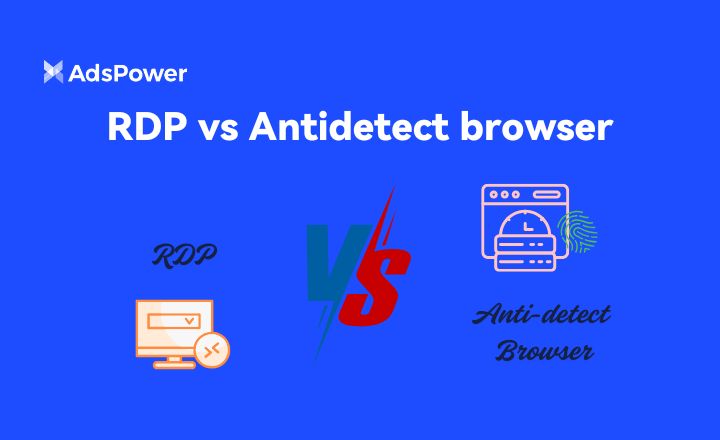キャンバスフィンガープリンティングの理解
有名な無料ソフトウェアプロバイダーである Ghostery の調査によると、固有ドメインを持つ Web サイトの 79% 以上がユーザーデータを収集するトラッカーを保有しています。今日最も人気のあるフィンガープリンティング手法の1つは、キャンバスフィンガープリンティングです。
この革新的なトラッキング手法により、ウェブサイトはユーザーのコンピュータが画像描画タスクをどのように実行するかを調べることで、ユーザーを識別できます。
しかし、多くのユーザーはユーザーを識別されることを望んでいません。これらのユーザーは、Cookie を無効にしたり、IP アドレスを匿名化したり、ブラウザ プラグインを使用してトラッキングを阻止したりするなどの対策を講じる可能性があります。
Canvas フィンガープリンティングとは?
Canvas フィンガープリンティングは高度で非常に正確であり、ブラウザ フィンガープリンティングの特殊な種類です。 HTML5 では、描画操作はコンピュータのソフトウェアとハードウェアの特性に応じて異なるレンダリング結果を示すことがあります。そのため、画像をレンダリングできる JavaScript コードを実行し、それを使用して固有のフィンガープリントを作成できます。
キャンバス フィンガープリントの仕組み
キャンバス フィンガープリント スクリプトが組み込まれた Web サイトをクリックすると、スクリプトはランダムなフォントとサイズのテキストとランダムな背景を描画します。その結果、キャンバスのピクセルデータはBase64エンコード形式に変換され、その後、フィンガープリントにハッシュ化されます。
常に念頭に置いておくべき重要な点は、コンピューターによって画像の描画方法が若干異なるということです。生成された画像が人間の目には同じに見えても、わずかな違いによって区別することができます。
キャンバスフィンガープリンティングは合法ですか?
ブラウザフィンガープリンティングは今日話題になっていますが、キャンバスフィンガープリンティングは言うまでもなく、ブラウザフィンガープリンティングに関する明確な法律や規制は存在しません。米国にはウェブトラッキングを規制する法律はありませんが、少なくともカリフォルニア州消費者プライバシー法とバーモント州のデータブローカー法は、オンライントラッキングとデータ収集に対処しようとしていますが、キャンバスフィンガープリンティングやデバイスフィンガープリンティング全般については具体的には触れていません。
一般データ保護規則(GDPR)によると、ウェブサイト所有者が関連するすべての規則と規制を遵守している限り、ブラウザフィンガープリンティングは欧州で合法です。 GDPRではフィンガープリンティングについて具体的に言及されていませんが、Cookieによるトラッキングと同様に、ウェブサイトはユーザーを追跡する前に同意を得る必要があります。
キャンバス・フィンガープリンティングを回避するには?
ご存知のとおり、キャンバス・フィンガープリンティングはウェブサイトの不可欠な要素であるHTML5のキャンバス要素に依存しているため、デジタルデータを追跡するCookieを簡単にブロックできます。アクティビティはブロックしますが、HTML5 キャンバス要素はブロックしません。
ユーザーがキャンバス フィンガープリントを送信していないため、キャンバス フィンガープリントをブロックするのは妥当なアイデアのように思えます。しかし、現実には、キャンバスフィンガープリンティングをブロックすると、あなたの身元が明らかに特定されてしまいます。
実行しているプラグインや拡張機能は、ブラウザフィンガープリンティングにおける重要な識別子の一部であることを忘れないでください。簡単に言えば、キャンバスフィンガープリンティングをブロックすることは、マスクを着用していない人々の群衆の中でマスクを着用しているようなもので、より目立つようになります。
キャンバスフィンガープリンティングを避けるには、まずキャンバスフィンガープリンティング機能が有効になっていることを確認し、すでにマスクされているようには見えないようにすることで、周囲に迷惑をかけないようにする必要があります。
そして、検出を回避しているようには見えないよう、キャンバスのアイデンティティを一貫して使用してください。最後に、デジタルトラックを消去する必要がある場合は、アイデンティティを切り替えてください。しかし、これらの対策は、不正アクセスを制御できる可能性は高いものの、防止できる可能性は低いでしょう。
最も一般的な選択肢は、キャンバス フィンガープリンティングとブラウザ フィンガープリンティングの両方を防止するためにアンチフィンガープリンティング ツールを使用することです。これらは相互に連携して機能します。
キャンバスフィンガープリンティングを防ぐための最も人気のあるツールの一つが、Browser AdsPowerです。これは、タイムゾーンや位置情報など、デバイス上に全く新しいインターネット環境を作成できる独立したブラウザです。IPアドレスを匿名に保ちたい場合は、AdsPowerをお試しください。

他にも読む記事
- 2025年のWhoer代替サービス8選(正確でプライベートなIPチェックツール)

2025年のWhoer代替サービス8選(正確でプライベートなIPチェックツール)
Whoer.netの代替品をお探しですか?正確でプライベートな指紋分析と強化されたオンラインセキュリティを実現する、2025年版IPチェックツール8選をご覧ください。
- WebRTC は何に使われますか?WebRTC は IP アドレスを漏洩しますか?

WebRTC は何に使われますか?WebRTC は IP アドレスを漏洩しますか?
WebRTC とは何か、何のために使用されるのか、IP アドレスが漏洩するかどうか、AdsPower の WebRTC モードなどのツールを使用してどのように保護を維持するのかについて学習します。
- RDP と Antidetect ブラウザ: 違いは何ですか? どちらがより安全ですか?

RDP と Antidetect ブラウザ: 違いは何ですか? どちらがより安全ですか?
アカウント管理にRDPまたはアンチディテクトブラウザを使用していますか?RDPとアンチディテクトブラウザの違いと、使い分け方をご確認ください。
- ユーザーエージェントとは何か:UAコンポーネントとその確認方法

ユーザーエージェントとは何か:UAコンポーネントとその確認方法
このブログでは、ユーザー エージェントとは何か、そのコンポーネント、ブラウザーの UA 文字列を見つける方法について説明します。
- ブラウザフィンガープリンティングを回避する方法:総合ガイド

ブラウザフィンガープリンティングを回避する方法:総合ガイド
ブラウザフィンガープリンティングが心配ですか?当社のガイドを利用すれば、個人情報の漏洩を最小限に抑えながら、フィンガープリンティングを防止できます。



